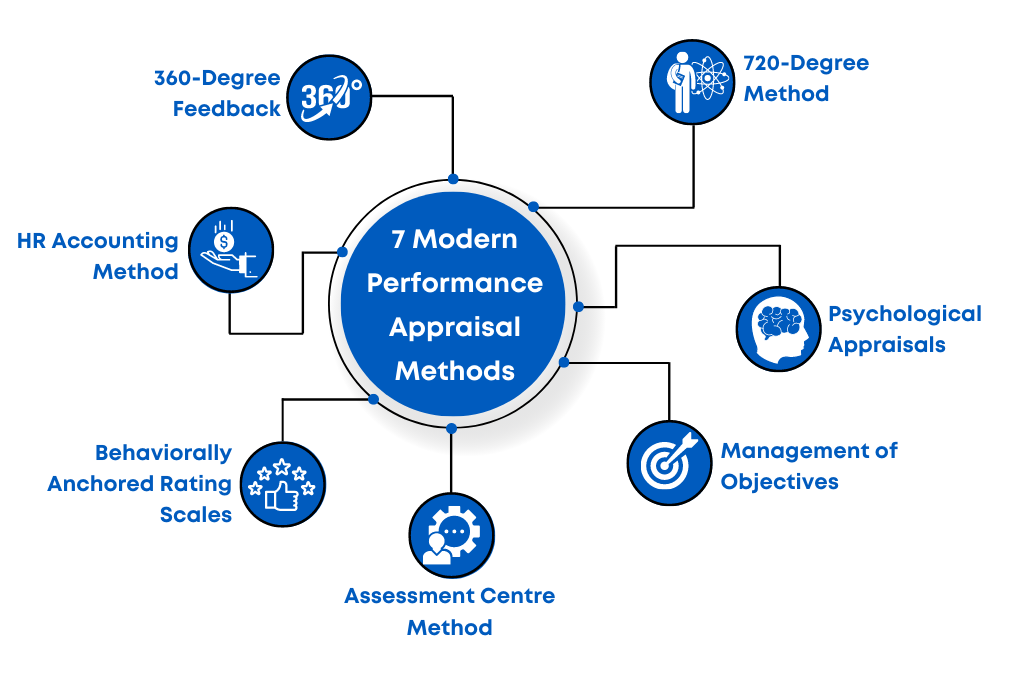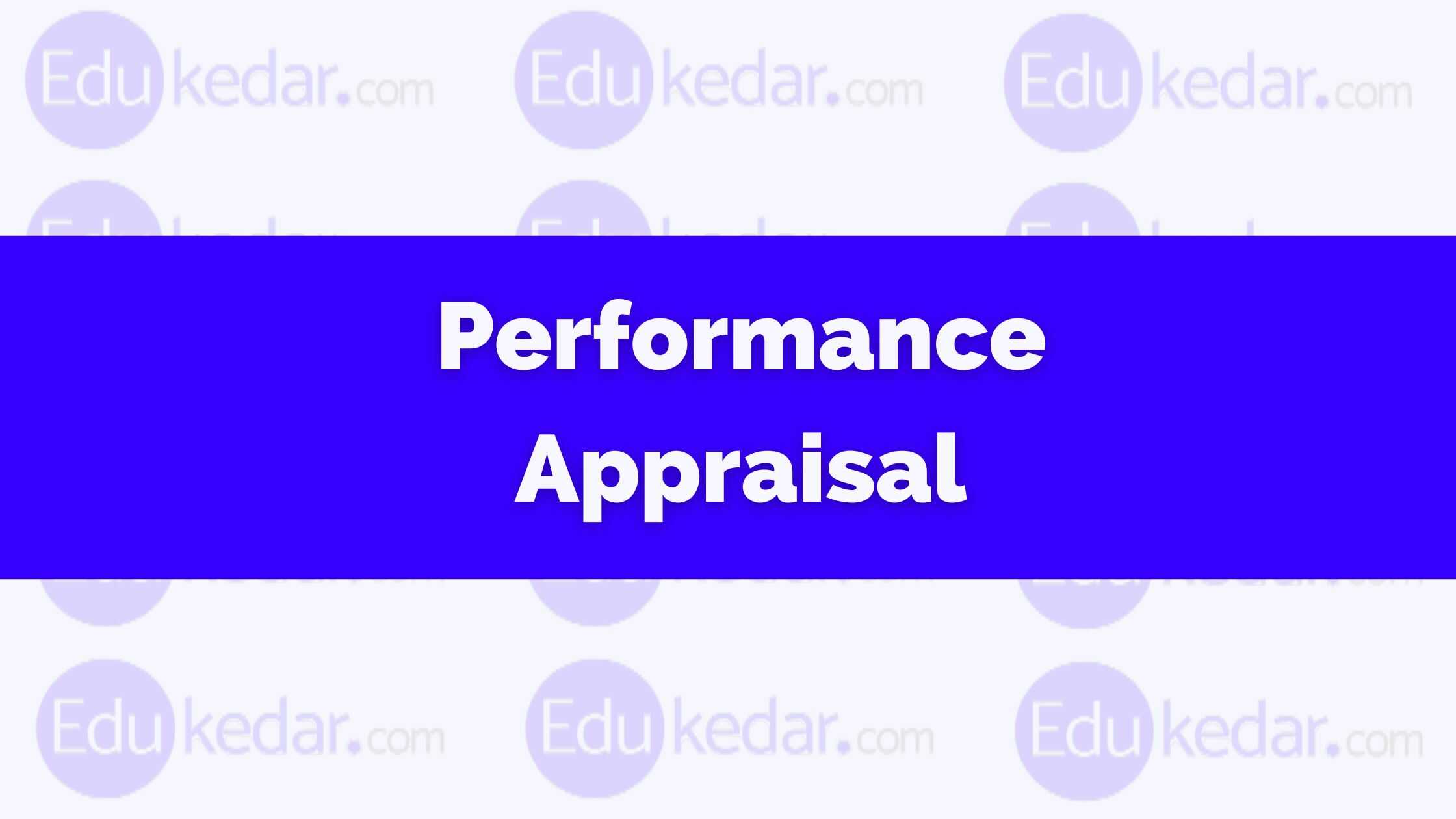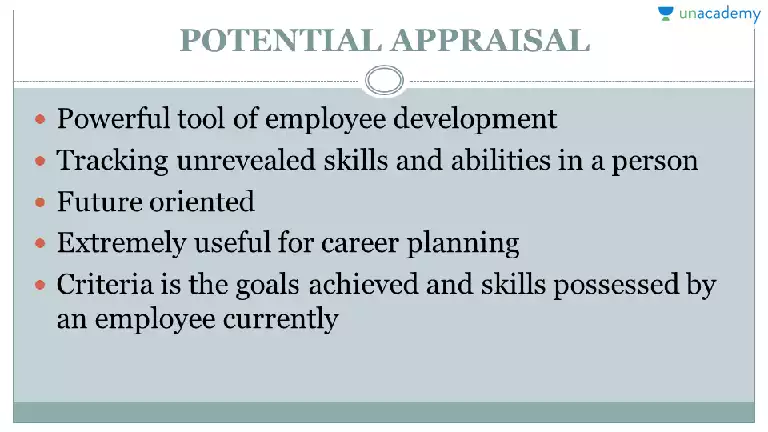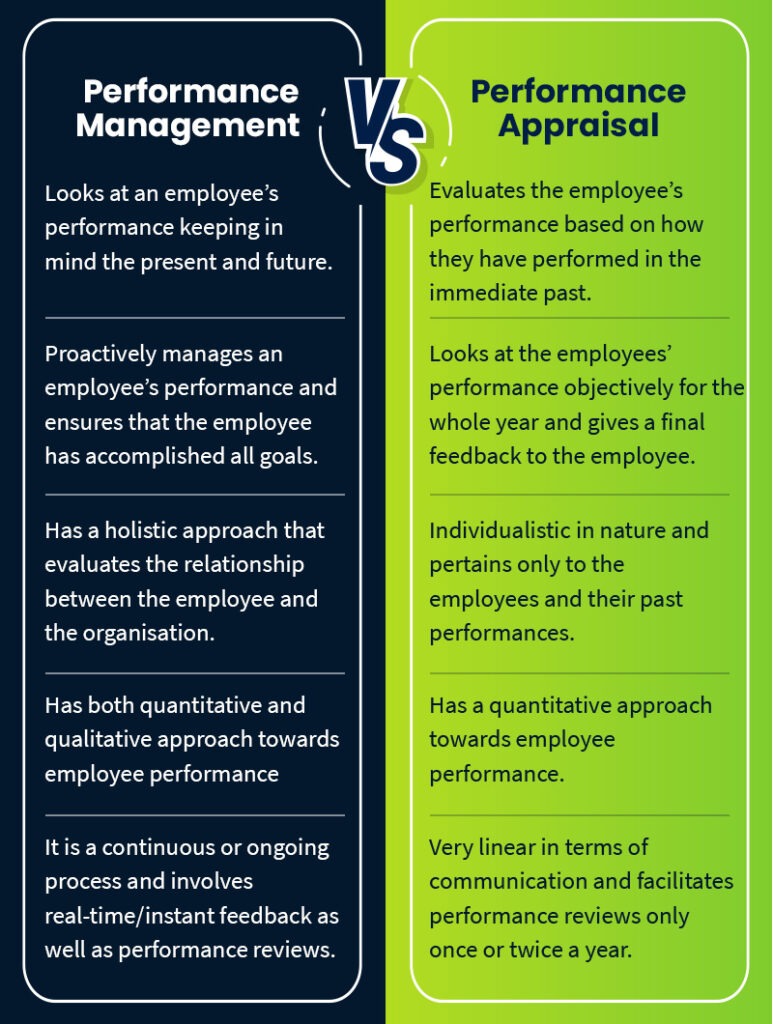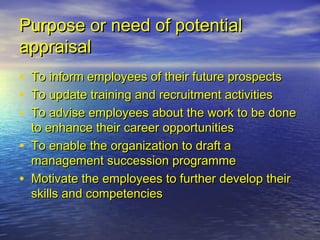Potential appraisal is the process of assessing and evaluating the potential of an individual or group of individuals to perform a certain task or role within an organization. It involves identifying the strengths, weaknesses, and areas of development of the individual or group, as well as setting goals and objectives to help them reach their full potential.
Potential appraisal is an important aspect of talent management, as it helps organizations identify and develop the talent they need to achieve their strategic objectives. It is also a useful tool for career development, as it helps individuals understand their own strengths and weaknesses, and identify the types of roles and responsibilities they are best suited for.
There are several approaches to potential appraisal, including performance appraisal, personality assessment, and skills assessment. Performance appraisal involves evaluating an individual's past performance and identifying areas for improvement, while personality assessment involves evaluating an individual's personality traits and behaviors. Skills assessment involves evaluating an individual's knowledge and abilities in a particular area or domain.
Potential appraisal can be conducted using a variety of methods, such as self-assessment, peer review, and assessment centers. Self-assessment involves the individual evaluating their own strengths and weaknesses, while peer review involves feedback from colleagues and peers. Assessment centers involve a series of simulated exercises and tasks designed to evaluate an individual's potential for a particular role or job.
Effective potential appraisal requires a thorough understanding of the needs and objectives of the organization, as well as a clear understanding of the individual or group being evaluated. It is important to use a range of methods and approaches to ensure a comprehensive and accurate assessment of potential.
In conclusion, potential appraisal is a valuable tool for organizations to identify and develop the talent they need to achieve their strategic objectives, and for individuals to understand their strengths and weaknesses and identify the types of roles and responsibilities they are best suited for. It involves evaluating an individual's or group's strengths, weaknesses, and areas of development, and setting goals and objectives to help them reach their full potential.



